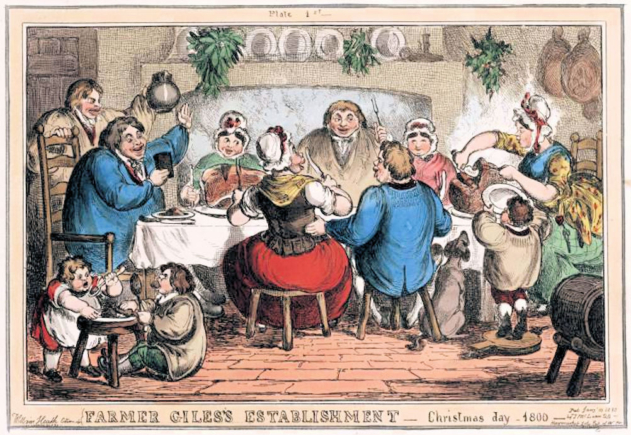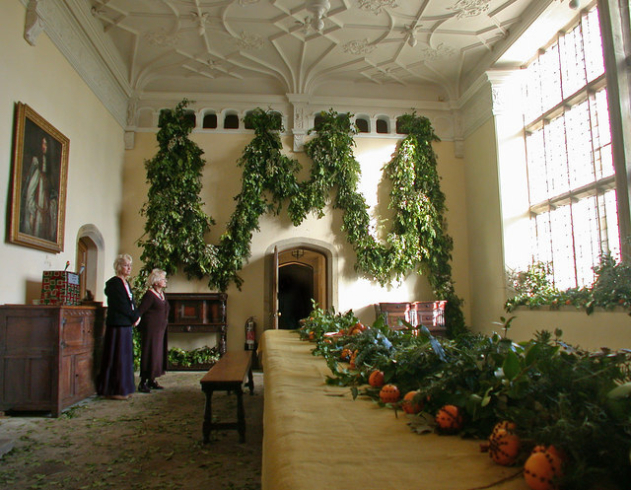Christmas Past
As the festive season draws to a close with many of us taking down our decorations on Twelfth Night, we’re having a look at some of the traditions that might appear in written records or photographs from Christmas celebrations past.
Christmas celebrations as we know them today were formed around the Victorian period. But what did people do before the Victorians?
A lot, it turns out!
Regency Revelry
In the Regency period (1795-1837), celebrations started on the 6th December, or St Nicholas’s Day, when small gifts were exchanged following the Northern European tradition. Serious celebrations started on Christmas Eve and lasted over the period of Christmastide until Twelfth Night (the 6th January).
The run up to Christmastide began at the start of Advent (the fourth Sunday before Christmas), Christmas puddings were prepared and plans made for the celebrations. On Christmas Eve decorations were put up.
Regency period decorations were much simpler than the decorations used today. They were gathered from local fields and woods or from gardens, and were essentially evergreen plants. They included the traditional holly with its red berries and mistletoe with its white ones but also rosemary, bay, laurel, box, yew and fir. These were used because of their pagan symbolism associated with everlasting life. It must have smelt wonderful!
When the decorations should be taken down varied from region to region around the country. In some places they were taken down on Twelfth Night, in others on Candlemas Eve (2nd February) and in other places, it was on the 40th day of Christmas.
How the decorations were disposed of also varied depending on where you lived. In some places they could just be removed from the house. In other places they had to be burnt.
At the end of Christmastide, on Twelfth Night, the party was bigger than the Christmas Day celebrations. People exchanged gifts and held fancy dress balls with every guest having a character and a part to play. Guests were either told beforehand who to come dressed as or the hostess provided dressing-up items for guests on arrival. If someone broke out of character there was a forfeit to pay later!

Tudor Traditions
The Tudors did things a little differently. The lead-up to Christmas for a good Tudor citizen was a time for fasting. Definitely, no meat, cheese or eggs to be eaten during Advent. But they made up for it from Christmas Day onwards. The 12 days of Christmas were days when no work (apart from looking after animals) was to be done by men who worked on the land, which was a lot of people in the days before the Industrial Revolution. No one could be compelled to work - women were banned from doing any spinning.
Mulled wine and ‘minced’ pies were eaten. Ghost-stories were traditionally told to while away long winter nights around the fire. This was also the time when Turkeys were introduced as fine Christmas food – Henry VIII was one of the first people in this country to eat a turkey as part of the Christmas Day feast.
A little while after the Tudors, the Puritans were the people who banned Christmas. Parliament passed laws in the period from 1644-1647 making it illegal to celebrate Christmas, saints’ days and other holy days. Fortunately, Charles II reinstated Christmas in 1660.

Tudor Christmas Decorations At Trerice. By Geoff Welding, CC BY-SA 2.0
Pagan Practices
From the 4th century onwards Christmas was celebrated in Europe anywhere in the year between the beginning of January through to late September. It was settled on 25th December by Pope Julius 1, making the most of pagan festivals that occurred at about this time.
It may have been Viking invaders who were responsible for bringing the tradition of the Yule Log to British celebrations. Large bonfires were traditionally built in midwinter to celebrate the traditional Viking festival of light.